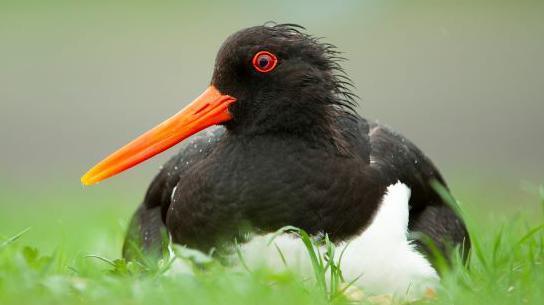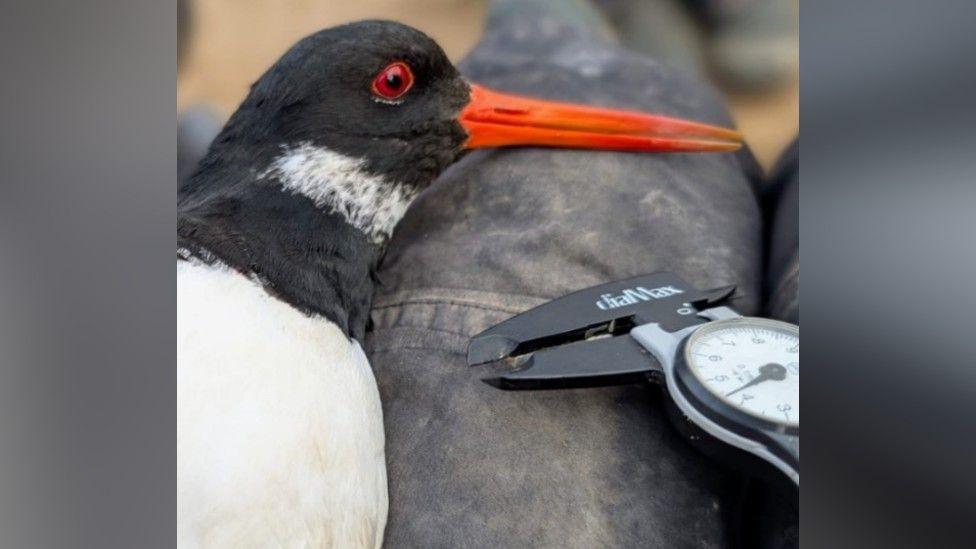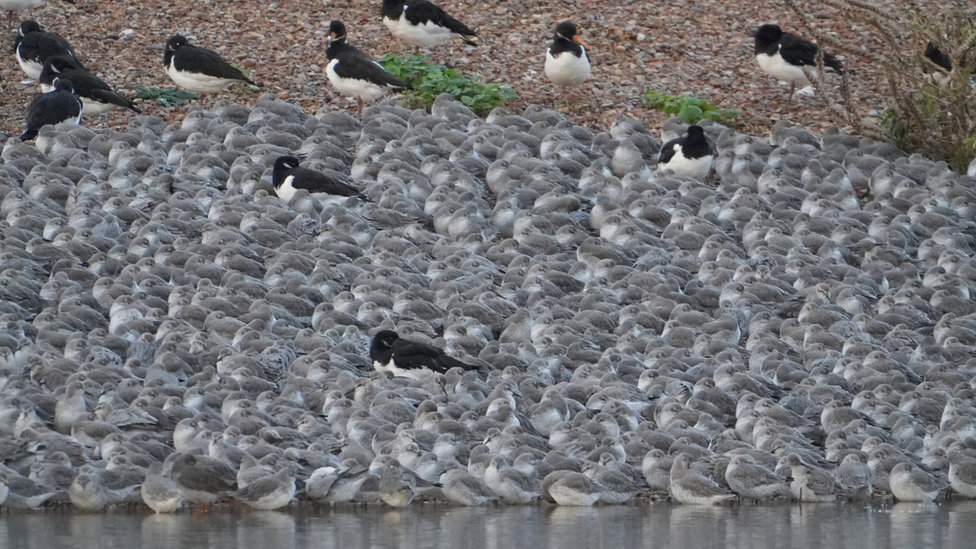Birds outlive life expectancy by 30-plus years

Two oystercatchers aged 41 and 43 have been found during a bird survey
- Published
Two oystercatchers that have outlived the species' average life expectancy by some 30 years have been discovered by bird surveyors.
In February, bird recorders from the Wash Wader Research Group, external (WWRG) found an oystercatcher believed to be about 41 years and eight months old, at RSPB Snettisham in Norfolk.
A few weeks later, they found an even older bird - aged 43 - on The Wash Estuary in Lincolnshire. It said both birds found were healthy and in a good condition.
The average lifespan of an oystercatcher, recognisable by its black and white feathers, orange bill and red legs, is about 12 years, said the bird experts.

The bird aged 41-years-old found at RSPB Snettisham was ringed as a chick in 1983 in Weybourne, thus enabling the experts to age the bird
Jacquie Clark, from WWRG, said: "It was amazing to find the first oystercatcher and confirm it was the UK's oldest, but we're even more stunned that it's all happened again within just a few weeks.
"To find an even older bird on The Wash is astounding. It just shows how crucial this huge coastal wetland is for these birds."
The conservation charity said bird ringing in Britain and Ireland was coordinated and licenced by Thetford-based British Trust for Ornithology (BTO), which was able to confirm the ages of both birds.
Bird ringing has been used to monitor wild bird populations for more than a century.
Dr Ellie Leach, head of the BTO ringing scheme, said: "We know that the average oystercatcher lives for 12 years, but birds in their 20s and 30s are regularly recorded, so these two birds are old but not completely unexpected."
Jim Scott, RSPB estate operations manager at Titchwell Marsh and Snettisham Reserve, said The Wash was a site of "international importance" for oystercatchers, with about 26,000 nesting there.
He said: "Oystercatchers rely on The Wash mudflats for food as they are jam-packed with invertebrates such as ragworms, snails and shellfish.
"So, in some ways, it's not really a surprise that these two record-breaking oystercatchers choose to spend every winter here.
"As time goes on we may find the longevity record of oystercatchers keeps getting extended... it just shows how important it is that we protect these areas."
Get in touch
Do you have a story suggestion for Norfolk?
Follow East of England news on X, external, Instagram, external and Facebook: BBC Essex, external, BBC Norfolk, external, or BBC Suffolk, external.
Related topics
- Published14 May 2024

- Published3 November 2023
